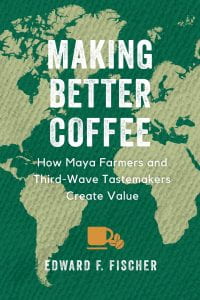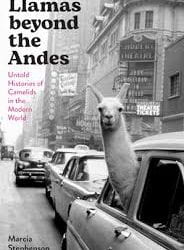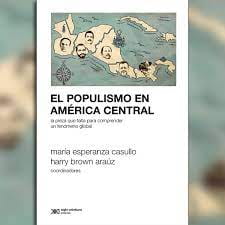A Review of Making Better Coffee: How Maya Farmers and Third Wave Tastemakers Create Value

Making Better Coffee: How Maya Farmers and Third Wave Tastemakers Create Value by Edward F. Fischer (University of California, 2022)
Three waves of global coffee regimes have influenced production landscapes extensively during the past century. Propelled by European colonialism, a First Wave (“mainstream coffee”) increasingly engulfed Latin America and much of the world by the early 1900s with globally mass-produced coffee that continues today. Then, a Second Wave (“differentiated coffee”) emerged with the specialty coffees that expanded greatly in the 1990s. Most recently, certain coffee landscapes and consumers have entered a Third Wave (“relational coffee”) that entails an unprecedented valuation of exceptional quality, singularized production and trend-setting tastemakers.
This is the tale of coffee that unfolds convincingly in Edward F. Fischer’s new book Making Better Coffee: How Maya Farmers and Third Wave Tastemakers Create Value. It focuses on Guatemala, a country whose characteristics as a coffee exporter trace to Spanish colonialism. The rise of German coffee markets and Guatemalan-German plantation oligarchs came to dominate the country’s First Wave in the 19th and 20th centuries. Then, in the Second Wave, the Maya smallholder farmers who emerged as key coffee growers relied on cooperatives as an underpinning of their expanding yet precarious role amid Guatemala’s neoliberal policies—“Austrian economics” in Fischer’s account.
The book’s historical and geographic sweep is bracketed by pair of ethnographic chapters. Together, these describe the experiences of recent global coffee trends and corresponding Guatemalan production that have converged in the rise of the Third Wave beginning around 2010. Under this new regime, wholesale beans typically sell for more than US$20 per pound and in 2012 one coffee producer received a then-record price of US$500.50 for a prized varietal. These prices motivate many Maya smallholder coffee farmers who otherwise might be likely to receive the typical farm-gate price of US$2 or less. At the far other end of the supply chain are niche-market processing facilities and retail venues where a cup of Third Wave coffee retails for upwards of $4 or $5 dollars. Here the book’s ethnographic descriptions traverse local roasting facilities and coffee shops, such as those in Nashville, Tennessee, as well as the international Specialty Coffee Association.
The “real power” of Third Wave coffee, according to Fischer, lies with the cultural powerbrokers in the supply chain that have “the ability to define what constitutes value.” Fisher turns his ethnographic approach to the storytelling associated with how value is created in Third Wave coffee. In doing so, he expertly draws on a range of vibrant ideas of value in anthropology and related fields, deftly describing how value must traverse multiple sociocultural and economic realms. Fisher’s highly readable interpretation elucidates how this commoditized concoction is imbued with meanings of moral good (especially social responsibility), authenticity (with emphasis on the artisanal), and quality (including premiums for unusual taste profiles).
Fischer’s ethnography is focused at opposite ends of the commodity chain of Third Wave coffee arcing back and forth from Mayan smallholder farms in Guatemala to the global roles of the value-creating and symbol-wielding storytellers. In Fischer’s account, these influential narratives are the work of the Specialty Coffee trade association as well as Third Wave roasters and coffeeshop barristers. Marketing of Third Wave coffee, however, is presumably being influenced and probably pivotally by additional buyers, financers, middle-men of the supply chains, and other less-visible influencers, though these latter groups are not significant in Fischer’s narrative ethnography of value.
Clearly it is not the Mayan farmers benefiting from the value that is being created and circulated in Third Wave coffee. One of the book’s key insights comes from Fischer’s field research with the individual farmers participating in the high-stake’s competition in Guatemala known as the Cup of Excellence. This competition reflects the Third Wave coffee regime since individual winners receive a multi-fold price premium for their product. In 2015, Fischer and others conducted a detailed, mini-study of this competition. The non-Mayan farmers in the competition received an average of $4 per pound for their coffee while, in the same year, the nearby Mayan coffee farmers accessed only the market segment with prices averaging $1.25 per pound. Moreover, the researchers’ tasting analysis showed that more than one half of the latter group of coffees scored at extremely high levels of flavor quality. Given these findings, the titling of Making Better Coffee, which appears at first glance to be a statement of existing conditions or at least aspirations, is actually tongue-in-cheek or even bitterly ironic.
Making Better Coffee reveals how large-scale coffee markets and the corresponding particulars of Guatemalan production have been built on the racialized, colonial and often violent exploitation of Mayan people and environments. It shows how the First Wave of coffee production in Guatemala epitomized the global tragedy of rampant widespread political-ecological destruction by plantations. Fischer’s book thus sheds light on the continuing legacy of global export agriculture that is being called the Plantationocene.
But the Second and Third Waves of global coffee, as skillfully illustrated in the case of Guatemala and Mayan farmers in this book, are more complex and of compelling interest in relation to the Plantationocene. That coffee export agriculture in Guatemala became based on Mayan smallholder farmers during recent decades is an exception to the general increase of farm size in many agricultural sectors. Their effective role in new coffee production, notwithstanding its precarity, runs counter to the predominant marginalization and displacement of indigenous smallholders amid the development of export agriculture. Notable too is the novelty of agrobiodiverse coffee varietals numbering at least a dozen in Guatemala’s Third Wave production tabulated in the book. This agrobiodiversity resonates with the agroecological claim of the sustainability of shade-grown coffee that is integral to the storytelling of the Third Wave as well as the continued Second Wave.
In sum, this exceptional book offers much-needed insight into the ongoing saga of Latin America’s coffee development in the Plantationocene. Its expertly grounded approach offers a fresh brew that stimulates our understanding of the new sociocultural and production dynamics at play in this powerful commodity valuation.
Karl Zimmerer studies and advocates for food-system sustainability, diversity, and justice as an environment-society geographer who is also in the sociology and ecology programs of Pennsylvania State University. He is currently at the Université de Montpellier, France.
Related Articles
A Review of Llamas beyond the Andes: Untold Histories of Camelids in the Modern World
Marcia Stephenson’s Llamas beyond the Andes is about humans making use of another animal. With a dustjacket image of Llinda Llee Llama riding in the back of an automobile in mid-20th-century Times Square, this book illustrates how sentient nature has been engulfed by human cultural objectives since Columbus’ arrival in the Americas and the rise of Europe’s global imperial ventures. The window on all this is American camelids: llamas, alpacas and their wild relations, guanacos and vicuñas.
A Review of Born in Blood and Fire
The fourth edition of Born in Blood and Fire is a concise yet comprehensive account of the intriguing history of Latin America and will be followed this year by a fifth edition.
A Review of El populismo en América Latina. La pieza que falta para comprender un fenómeno global
In 1946, during a campaign event in Argentina, then-candidate for president Juan Domingo Perón formulated a slogan, “Braden or Perón,” with which he could effectively discredit his opponents and position himself as a defender of national dignity against a foreign power.




